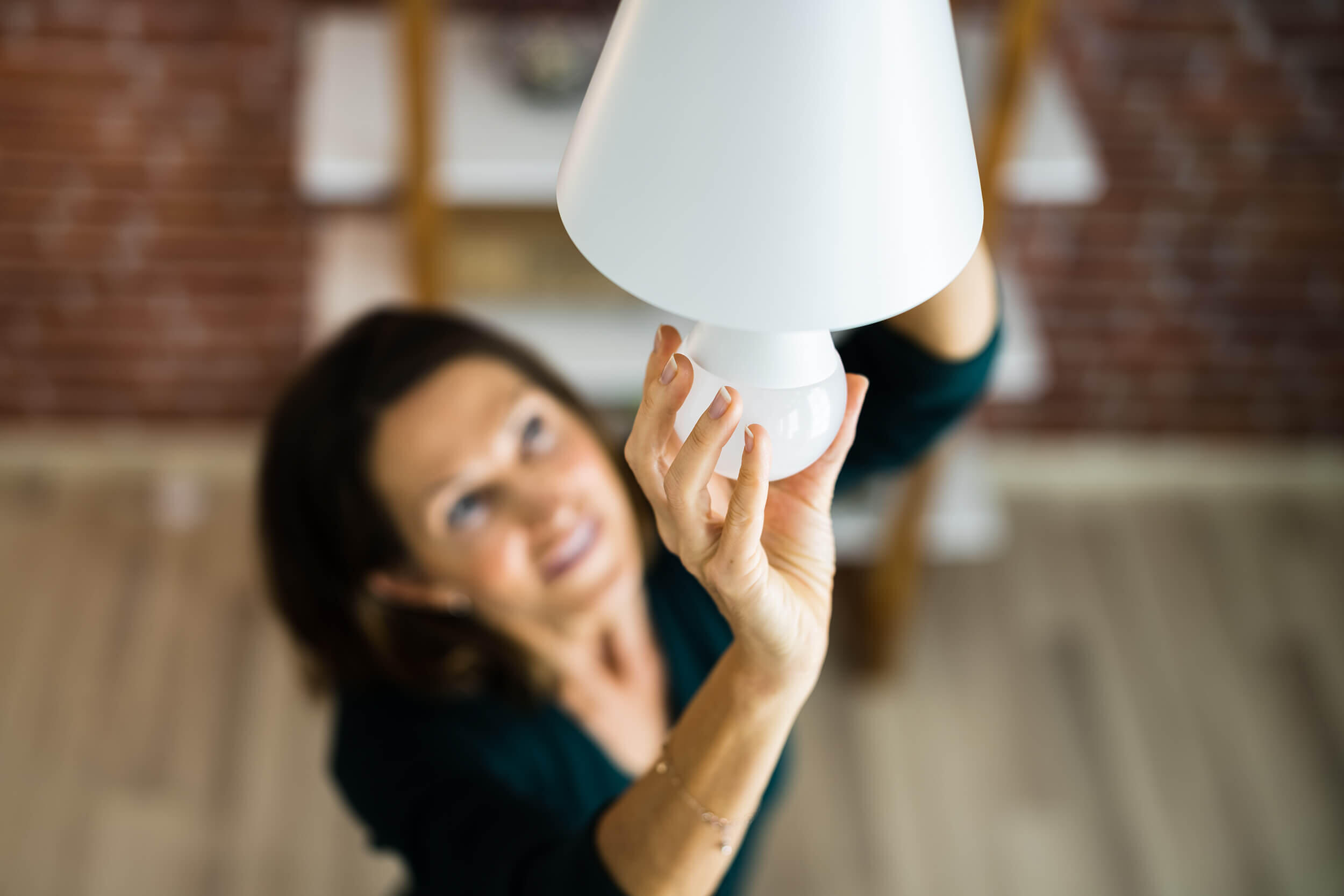
THE PRODUCT:
About half of all light bulbs sold in the U.S. are the familiar pear-shaped “A-type” bulbs. Other general service lamps (GSLs) include reflector bulbs used in recessed or track lighting, decorative candle-shaped bulbs, and globe-shaped bulbs used in bathroom vanity lighting.
Before the first federal standards took effect in 2012, A-type bulbs usually came in 40, 60, 75, or 100-watt incandescent versions. After the 2012 federal standards, most incandescent A-type bulbs were replaced by slightly more efficient halogen bulbs, and much more efficient compact fluorescent lamps (CFLs). Today, most GSLs sold use light-emitting diode (LED) technology. LED bulbs use less energy and last longer than incandescent, halogen, or CFL light bulbs.
THE STANDARD:
The current standards for GSLs, referred to as the “backstop” standard, took effect on July 25, 2022, requiring the minimum efficacy of all GSLs to be at least 45 lumens per watt (lpw). The current standards effectively require that all GSLs be either CFLs or LEDs, although virtually all current sales are LEDs. In 2024, DOE finalized amended standards for GSLs with compliance required starting July 25, 2028. The new standards will require a minimum efficacy of about 125 lpw for the most common light bulbs, which can be met by improved LEDs. Under the new standards, a common “60-watt equivalent” bulb will need to use no more than 6.5 watts.
KEY FACTS :
Incandescent light bulbs have been around for more than a century. Over time, consumers became accustomed to buying bulbs based on their power rating (40, 60, 75, or 100 watts) as a proxy for the brightness of the bulb. Brightness (perceived power of light) is actually measured in lumens, and the DOE standards specify a minimum lumen output per watt of input power. LEDs can produce the same lumens as traditional incandescent bulbs using far less power.
Fact Sheets
Filings
Other News
Standards in the News
Timeline
| Federal | Date |
| Next Review Due | 2030 |
| 2nd Federal Standard Effective | 2028 |
| 2nd Federal Standard Adopted | 2024 |
| 1st Federal Standard Effective (Phase 2) – 45 lpw “backstop” | 2022 |
| 1st Federal Standard Effective (Phase 1) | 2012 |
| 1st Federal Standard Adopted | 2007 |
| EISA Initial Federal Legislation Enacted | 2007 |